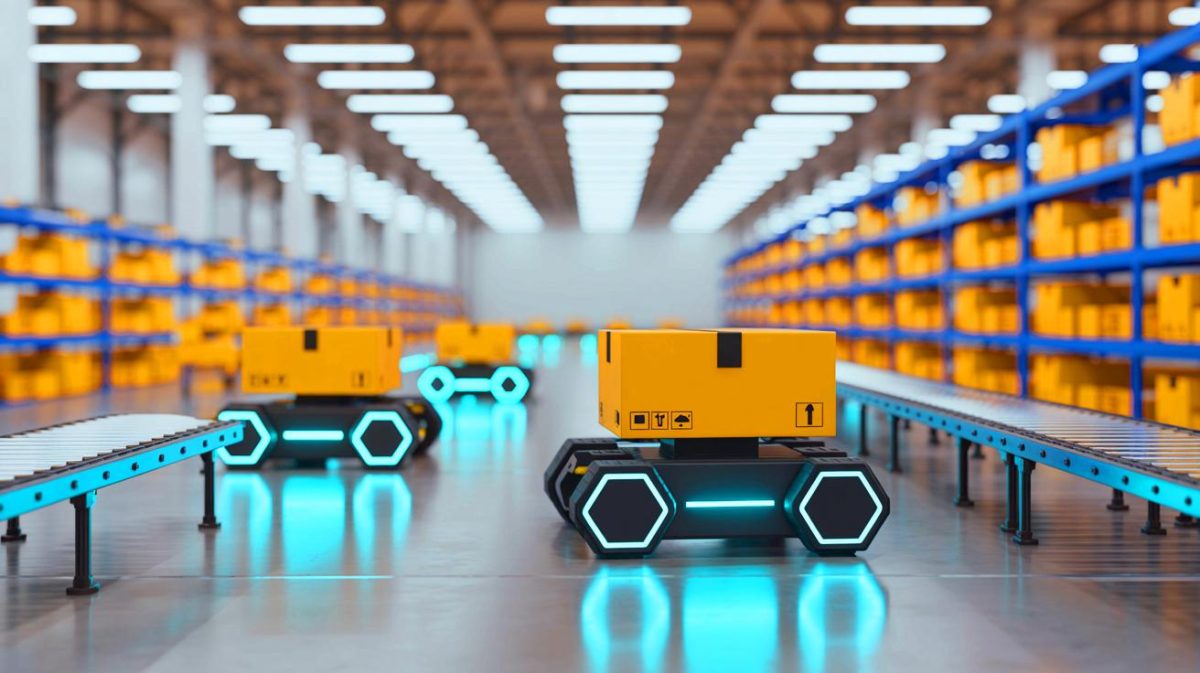| IN A NUTSHELL |
|
In today’s fast-paced world, the demand for efficient and innovative logistics solutions is higher than ever. As warehouses strive to keep up with increasing consumer demands and rapid technological advancements, the need for cutting-edge automation systems becomes apparent. One such breakthrough in logistics technology is the Celluveyor system developed by German firm Cellumation. This system promises to revolutionize the way goods are sorted and moved within warehouses, offering unparalleled precision and flexibility. With its unique design and capabilities, the Celluveyor system is poised to reshape the landscape of warehouse automation, providing a glimpse into the future of logistics.
Revolutionizing Warehouse Automation with Celluveyor
The Celluveyor system brings a new level of efficiency to material handling, utilizing a series of hexagonal robot cells equipped with omnidirectional wheels. Each cell features three omniwheels capable of 360° movement, allowing for smooth and collision-free navigation within even the most restricted spaces. This modular design not only facilitates precise control over the movement of goods but also provides scalability and adaptability to various warehouse configurations.
At the heart of this innovation is a sophisticated AI-powered vision system that continuously monitors the size and position of each object. By employing advanced algorithms similar to those used in autonomous vehicles, the system dynamically calculates optimal routes for packages, eliminating the need for manual intervention. This results in seamless operations, where goods arrive at their destinations perfectly aligned and ready for further processing or delivery.
Partnerships Enhancing Capabilities
Recognizing the transformative potential of the Celluveyor system, leading supply chain automation firm Daifuku has partnered with Cellumation to integrate this technology into its robotic depalletization systems. This collaboration aims to enhance the efficiency of removing packages from pallets, streamlining their journey through complex warehouse environments. By combining Daifuku’s expertise with Cellumation’s innovative technology, the partnership seeks to offer a comprehensive solution that addresses the challenges of modern logistics.
This integration underscores the importance of collaborative efforts in driving technological advancements. Together, these companies are not just optimizing current processes but also paving the way for future innovations in warehouse automation. The partnership exemplifies how strategic alliances can lead to the development of solutions that are greater than the sum of their parts, ultimately benefiting the entire logistics industry.
Optimizing Space and Efficiency
One of the standout features of the Celluveyor system is its space-saving design. Traditional conveyor belts and sorting systems often require significant floor space, limiting their application in smaller or more densely packed warehouses. However, the Celluveyor’s compact and agile structure allows it to fit into tight spaces without sacrificing functionality. This makes it an ideal choice for warehouses looking to maximize their operational areas while maintaining high levels of efficiency.
Moreover, the system’s ability to handle complex routing and sorting tasks offers a flexible alternative to conventional systems. By efficiently directing packages to their intended locations, the Celluveyor helps reduce bottlenecks and improve overall throughput. This optimization of space and resources not only enhances productivity but also contributes to cost savings, making it a valuable asset for any logistics operation.
The Future of Logistics
As the logistics industry continues to evolve, innovations like the Celluveyor system highlight the potential for technology to transform traditional practices. By offering a smarter, more efficient approach to warehouse automation, these advancements are setting new standards for what is possible in the realm of logistics. The integration of AI and modular robotics provides a glimpse into a future where warehouses are not just places of storage but dynamic hubs of activity, capable of adapting to ever-changing demands.
As we look ahead, the question remains: how will further advancements in automation and technology continue to reshape the logistics landscape, and what new possibilities will they unlock for businesses around the world?
Did you like it? 4.5/5 (22)








Wow, these hexagon-wheel robots sound like something out of a sci-fi movie! 🚀
How does the Celluveyor system handle different package sizes?
I’m curious, how much does it cost to implement such a system in a warehouse?
Is this technology available globally, or is it limited to certain regions?
This sounds great, but what about job losses due to automation? 🤔
Can these robots handle fragile packages with the same efficiency?
Thank you for the informative article. Very exciting times for logistics!
I’m skeptical. How reliable is the GPS accuracy indoors?